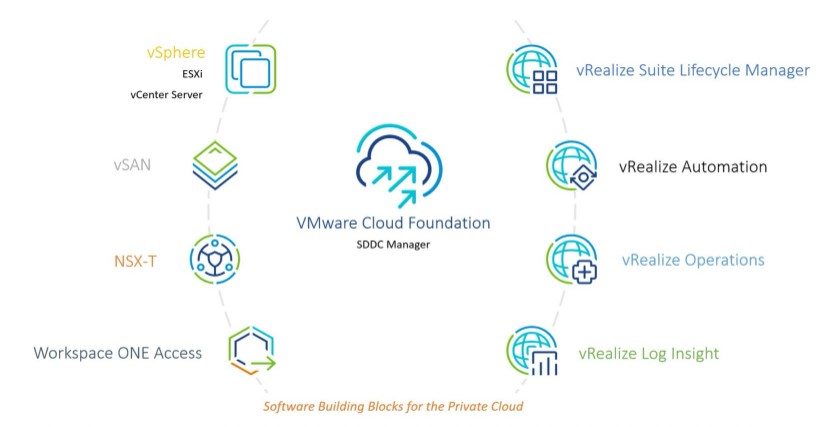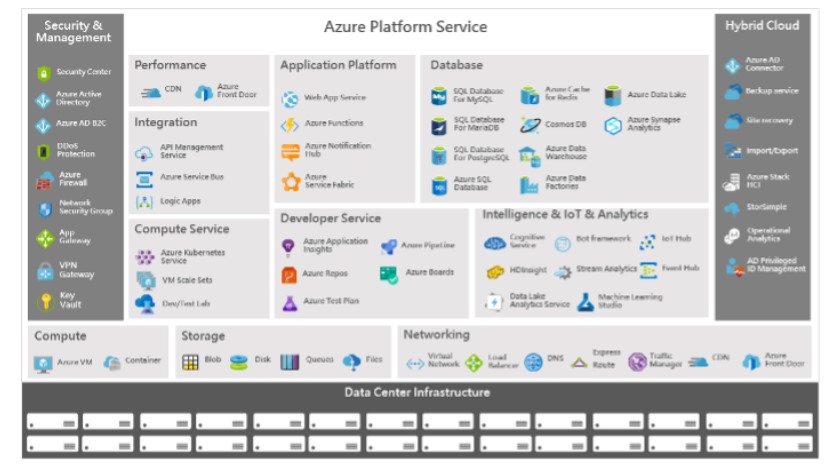Information and Communications Technology
Cloud Computing and Data center Solutions | VMware Cloud Foundation (VCF) | Network Management Solution | Broadband Integration Solutions | Private 5G network and smart application solutions | Telecommunication digital value-added application service | Cloud Solutions | Intelligent Cloud Cost Optimization Solution | Migration to Azure Cloud | Multi-Cloud Solutiond
Cloud Computing and Data center Solutions
Brief Introduction
Continually growing businesses have higher and higher requirements for IT departments; therefore, data centers need to be able to provide the capabilities required faster and faster. If new servers are continually bought, the purchase and operation costs will both increase, and they will also bring more expenditures for power supply and cooling. Under normal circumstances, only 5~10% of enterprises’ server workload is utilized; this results in wasting large amounts of hardware, space and electricity. Also, due to the compatibility issues of application programs, IT personnel can only run the applications on the different servers at different locations individually in order to isolate the application programs. However, this causes an increase in the number of servers. The purchasing of new servers is a long process, which makes it even more difficult for the IT department to respond to the rapid growth of the businesses and their ever-changing needs.
The infrastructures of enterprises nowadays are also growing rapidly because of the more and more complicated business requirements, and the hardware deployment models also further increased the complexity of the infrastructures; in addition, as applications also become more and more complicated, data centers are also becoming more and more difficult to manage, update and maintain. When we look at data centers as a whole, their technologies are also continually increasing, and their distributions are getting wider and wider; industries, laws and regulations are also continually requiring enterprises to strengthen their IT management and control. Using virtualization and cloud technology to design new generations of data centers and using them as the main forces to promote the development of businesses have become the thought of the new generation of IT infrastructure.
HwaCom has rich experience in establishing private clouds and hybrid clouds for large domestic enterprises and government bidding projects; it provides customers with tailored cloud ICT infrastructure designs through its in-depth cooperation with the leading brand in private cloud VMware, and the leading public cloud service provider Microsoft, and uses the strongest pre-sale/after-sale services to provide enterprises/government units with the most comprehensive consultative implementation services for every stage between Day0 ~ Day2 of the process of migrating to cloud.
Descriptions of Features and Advantages
The Software Defined Data center solution of VMware is the leading platform in the industry used to build the infrastructure for cloud computing. It allows IT to satisfy the SLA for the most rigorous key business applications using the lowest TCO (Total Cost of Ownership). It provides a complete set of applications and infrastructure services for computing, storage, network, availability, security and automation to realize a complete, highly efficient and secure cloud computing platform.

▲ VMware Software Defined Data Center Components
Enterprises can increase the efficiencies of server deployment, maintenance and operation significantly through the virtualization of servers or even data centers; enterprises can provide a virtual machine for a specific application within minutes. However, the deployment of any application is not on the virtual machine layer only; in practice, the application can only go online for operation with the configuration of a series of links including network, storage, security and management. Thanks to the development of software defined data center technology, now is the best time to re-examine the entire process carefully, to migrate the virtualization advantages of traditional servers to the other links in order to accelerate the deployment process of application systems; not only to realize flexibility and automation for the deployment of server resources, but also to extend these advantages to each link of data centers including storage, network, security, maintenance, operation and management. Software defined data centers provide preset security principles, disaster recovery plans and dynamically configured network strategies, etc. IT personnel can be released for large amounts of repeated tasks and instead focus on the innovation and development of businesses.
Benefits
As a system integrator based on the management process and integration spirit of ITIL (IT Infrastructure Library), HwaCom provides the Cloud Service Management Portal integration virtualization technology; through the industry’s most mature commercial cloud platform system, the VMware vCloud Foundation, hardware resources can be managed more comprehensively, and built-in application service level control is provided to establish a vastly simplified cloud computing infrastructure.
.png)
▲ Cloud Service Management Portal User Interface
Applications
As the development of private cloud matures, enterprises are also starting to try the design of multi-cloud environments to meet the globalized and agile IT service requirements; the Microsoft Azure cloud integration platform can complete and realize cloud/ground integration solutions for users. The Azure public cloud can freely and flexibly establish, manage and deploy the application program of users in over 60 data centers worldwide and further achieve the various operational goals. Through rich cloud services across IaaS, PaaS and even SaaS, users can use languages, structures and architectures (even their own data centers and other cloud terminals) that they are familiar with to solve the various big and small challenges in their business operations.
Take the currently most popular hybrid cloud structure as an example. Units in Taiwan that are rigorously monitored and controlled by laws and regulations, such as: financial, insurance and government units, can choose to keep sensitive data on the ground terminals, then use private security protection to expand the data and application services to the Azure cloud platform to achieve the extended application of services. In addition, HwaCom also provides comprehensive and customized Azure service type combinations for pure cloud computing, storage, database, deployment of a network environment, data security all the way to data governance, big data analysis and machine learning, etc., to meet the different needs of customers.

▲Microsoft Azure Cloud Service Component Diagram

